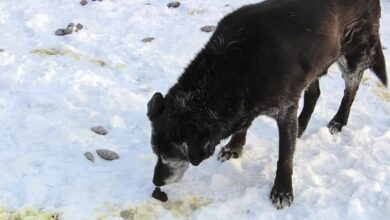
Can Dogs Eat Lima Beans? Yes, cooked lima beans are safe for dogs in moderation. They provide a healthy source of fiber and protein but should always be served cooked to avoid any digestive issues.
Raw lima beans contain toxins that can be harmful, so they should never be fed raw. Always ensure the beans are thoroughly cooked and served plain, without any harmful seasonings. Let’s briefly discuss that- Can Dogs Eat Lima Beans?
What Nutrients Do They Provide for Dogs?
Lima beans are more than just a tasty addition to meals—they can also offer some nutritional benefits for your dog when served correctly. Here’s a breakdown of what makes them a healthy option.
Fiber for Digestive Health
- Lima beans are packed with fiber, which helps support your dog’s digestion.
- Fiber promotes regular bowel movements and can prevent issues like constipation.
- Adding fiber to your dog’s diet in moderation may also help maintain a healthy weight.
Protein for Energy and Muscles
- These beans are a plant-based source of protein, which is great for maintaining your dog’s muscle health.
- Protein provides energy to keep your dog active and happy.
- While lima beans can’t replace meat, they make a nice supplement to a protein-rich diet.
Vitamins and Minerals for Overall Health
- Lima beans are rich in potassium, which helps support healthy muscles and nerve function.
- They contain magnesium, important for strong bones and overall vitality.
- Folate, another key nutrient in lima beans, supports cell growth and overall wellness.
By offering these nutrients, cooked and plain lima beans can be a great addition to your dog’s occasional treat list. Always serve them in moderation, and ensure they’re thoroughly cooked without any added seasonings.
Can They Cause Digestive Problems?
Lima beans can be a nutritious addition to your dog’s diet, but they can also cause digestive issues if not prepared or served properly. Here’s what you need to know to keep your dog safe and healthy.
Can Dogs Eat Lima Beans Without Digestive Problems?
Yes, dogs can eat lima beans, but you need to introduce them carefully. The high fiber content in lima beans can be beneficial for digestion, but too much fiber all at once may upset your dog’s stomach. Some dogs, especially those not used to high-fiber foods, might experience discomfort after eating lima beans.
Signs of Digestive Upset from Lima Beans
If your dog eats too many lima beans or eats them raw or improperly cooked, you might notice:
- Gas: Excessive gas is a common sign of too much fiber.
- Bloating: Large amounts of lima beans can lead to bloating, making your dog uncomfortable.
- Diarrhea: Sudden changes in diet or too many lima beans can cause loose stools or diarrhea.
How to Safely Introduce Lima Beans to Your Dog
To avoid digestive problems, follow these simple steps when feeding your dog lima beans:
- Start Small: Begin with a small portion of cooked lima beans to see how your dog reacts.
- Cook Thoroughly: Always cook lima beans properly. Raw lima beans can be toxic and harder to digest.
- Serve Plain: Avoid adding salt, spices, butter, or other seasonings that might upset your dog’s stomach.
- Monitor Your Dog: Watch for any signs of gas, bloating, or diarrhea after introducing lima beans.
Are Lima Beans Good for All Dogs?
Not all dogs tolerate lima beans the same way. If your dog has a sensitive stomach or a history of digestive issues, consult your vet before adding lima beans to their diet. Some dogs may need a slower introduction to prevent any digestive upset.
So, can dogs eat lima beans? Yes, but moderation is key. Cooked and plain lima beans are safe for most dogs when introduced gradually. By serving them in small amounts and monitoring your dog’s reaction, you can enjoy the benefits of this healthy treat without worrying about digestive problems.
Are There Any Risks in Feeding Lima Beans to Dogs?
Lima beans can be a healthy addition to your dog’s diet when prepared properly, but there are some risks to keep in mind. Understanding these potential hazards will help you make informed decisions about whether lima beans are right for your furry friend.
Toxicity from Raw Lima Beans
Raw lima beans contain lectins, natural compounds that can be harmful to dogs.
Consuming raw beans can lead to nausea, vomiting, or diarrhea in dogs.
Always cook lima beans thoroughly to remove lectins and make them safe to eat.
Risks from Seasonings and Additives
Lima beans prepared for human consumption often include ingredients that are unsafe for dogs, such as:
- Garlic and onions: Both are toxic to dogs and can cause serious health problems, including damage to red blood cells.
- Excessive salt: Too much salt can lead to dehydration or sodium poisoning in dogs.
- Butter or oils: These can upset your dog’s stomach or lead to unnecessary weight gain.
Possible Allergies or Sensitivities
Some dogs might be sensitive to legumes like lima beans. Symptoms to watch for include:
- Skin irritation or itching
- Upset stomach, gas, or bloating
- Vomiting or diarrhea
If you notice any of these signs after feeding your dog lima beans, stop giving them immediately and consult your vet.
How to Safely Feed Lima Beans to Your Dog
To minimize risks:
- Cook the beans thoroughly before serving.
- Serve them plain without seasonings, butter, or oils.
- Introduce them gradually and observe for any adverse reactions.
So, can dogs eat lima beans? Yes, but it’s important to be cautious. Always cook the beans, avoid harmful seasonings, and start with small portions to monitor your dog’s tolerance. By understanding these risks, you can safely include lima beans as an occasional treat for your dog.
How Should I Prepare Lima Beans for My Dog?
Preparing lima beans the right way is key to keeping your dog safe and ensuring they enjoy this healthy treat. Follow these simple steps to serve lima beans safely.
Cook Them Thoroughly
Always boil or steam lima beans until they are soft. This removes harmful lectins found in raw beans that can upset your dog’s stomach.
Cooking also makes the beans easier to digest and reduces the risk of bloating or gas.
Avoid Seasoning
Dogs don’t need the extra flavorings that humans enjoy. When preparing lima beans for your dog:
- Skip the salt – Too much sodium can harm your dog.
- Avoid garlic, onions, and butter – These ingredients are toxic or unhealthy for dogs.
- Serve the beans plain to keep them safe and healthy.
Cut or Mash the Beans
- For small dogs or puppies, chop the lima beans into smaller pieces or mash them to make them easier to chew and swallow.
- Mashed beans are also a great option if your dog prefers softer textures or if you want to mix them into their regular food.
How to Serve Lima Beans to Your Dog
- Offer lima beans as an occasional treat or mix a small amount into their regular meals.
- Start with a small portion to see how your dog reacts and watch for any signs of digestive discomfort.
So, can dogs eat lima beans? Yes, but preparation matters. By cooking them thoroughly, serving them plain, and adjusting the texture for your dog’s size, you can safely include lima beans as a nutritious part of their diet.
How Much Lima Beans Can I Give My Dog?
When feeding lima beans to your dog, portion size is crucial. While lima beans can be a healthy addition to your dog’s diet, it’s important to serve them in moderation.
Small Dogs
- Offer 1–2 tablespoons of cooked, plain lima beans as an occasional treat.
- Small dogs have sensitive stomachs, so introduce them gradually to avoid digestive upset.
Medium Dogs
- Serve 2–4 tablespoons of lima beans mixed with their regular food.
- This amount provides a healthy boost of nutrients without overwhelming their diet.
Large Dogs
- You can give up to 1/4 cup of lima beans, but only sparingly.
- Larger dogs can handle slightly bigger portions, but always ensure lima beans are just a small part of a balanced meal.
Key Tips for Feeding Lima Beans
- Moderation is key – Even though lima beans are nutritious, too much fiber can cause gas or bloating.
- Monitor your dog – Watch for any signs of discomfort, like diarrhea or stomach upset, after feeding them lima beans.
- Mix with regular food – Combine lima beans with your dog’s usual meals for a balanced approach.
By sticking to these portion sizes, you can safely share lima beans with your furry friend while ensuring their diet stays healthy and balanced.



